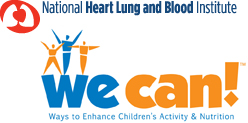



The Learn It section includes background information on overweight and educates you, parents and caregivers, on how to help your family maintain a healthy weight by balancing ENERGY IN (calories from food and drinks) and ENERGY OUT (calories burned through physical activity).
This section of the Web site is divided into the following topic areas:
Visit the Live It section to see additional tips and tools on how your family can maintain a healthy weight by making smart food choices, increasing physical activity, and reducing screen time.

We all have our own ideas about what a healthy weight is. Some people think a healthy weight is being "model thin," while others think how they feel is more important than the size of their waistline. To help you sort through the confusion, health experts have
/bmicalc.htm.
For more information about BMI-for-age and growth charts for children, visit www.cdc.gov/nccdphp/dnpa
/bmi/index.htm.

Energy is another word for "calories." ENERGY IN is what you eat and drink. ENERGY OUT is what you burn through physical activity and active living. If your energy balance is off and you take in more energy than you expend (out) over time, you will likely gain weight. Similarly, if you expend more energy than what you take in over time, you will likely lose weight. Find out more about maintaining a healthy weight through energy balance.
![]()
Overweight in childhood can be a serious health problem particularly if it is present with other risk factors, such as high blood pressure or diabetes. We Can! has compiled the most up-to-date science-based information on childhood overweight to help parents, caregivers, and health professionals promote a healthy weight for children ages 8 to 13 years. This Web site includes links to important information on the problem of overweight and associated risk factors in childhood, strategies and practical approaches to help prevent overweight, as well as new research related to childhood overweight supported by the National Institutes of Health (NIH).
We Can!™ is a trademark of the U.S. Department of Health and Human Services.
We Can! has produced a 60-second animated presentation that highlights the importance of preventing overweight and obesity for families.

We Can! offers a variety of resources and materials, including a community toolkit, parent handbook, parent tip sheets, posters, print ads, and wristbands.